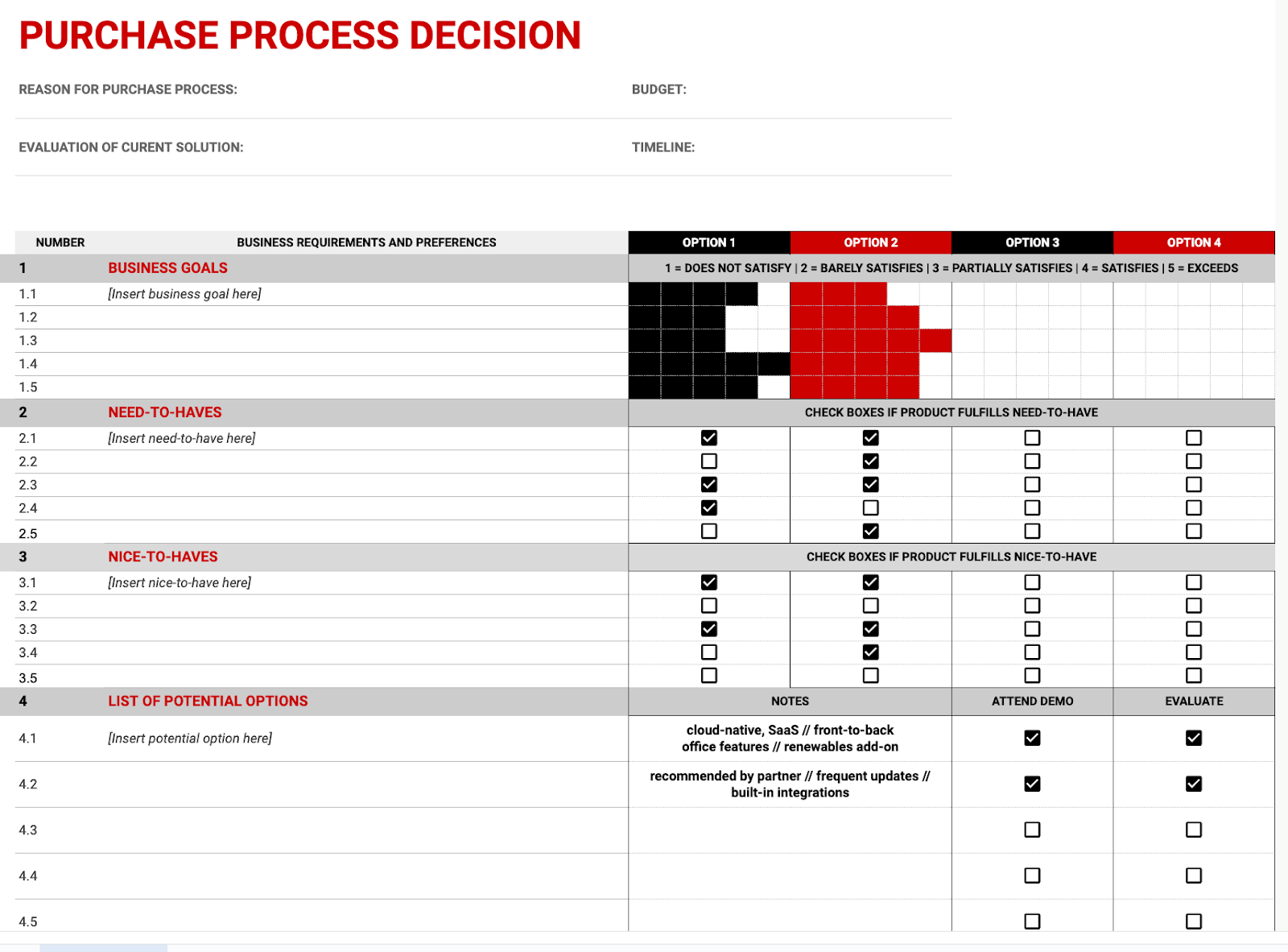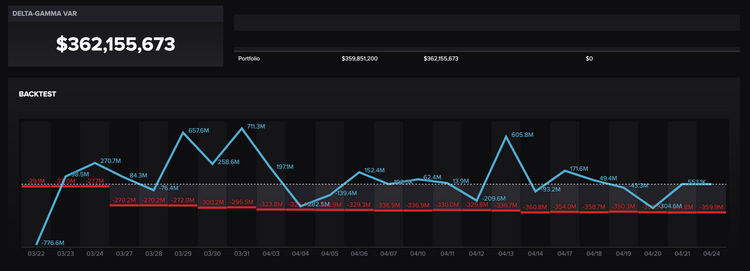How to Structure an ETRM Software Purchase Decision [+ Free Template]

ETRM software is complex – and so is the implementation and onboarding process. ETRMs automate deal capture, integrations, and other important workflows for trading and risk management. In turn, they can be a big investment for companies, and there can be some risk when implementing new ETRM software into your company’s workflow.
Due to the complexities involved in handling crucial data, setting up integrations, workflows, and permissions as well as incorporating any necessary custom features, it is common for an ETRM implementation to take several weeks or even months to complete.
Don't let any of this get in the way of finding a solution that optimizes your energy and commodity trading experience, though. To mitigate some of the risks of transitioning to a new ETRM, base your decision on a thorough, structured purchase process.
Follow the steps outlined in this article to undergo an efficient, informed, and process-driven ETRM purchase.
Table of Contents
- Step 1: Identify your business requirements
- Step 2: Define your budget
- Step 3: Conduct research
- Step 4: Schedule demos
- Step 5: Evaluate options
- Step 6: Start implementation
- Step 7: Post-Purchase Evaluation
Step 1: Identify your business requirements
The first step of the purchase process is to determine your company's specific business needs and goals. Then, determine how new risk management software will help them achieve these goals.
Some of these needs may arise out of the shortcomings of your current solution. If so, compiling a list of the pros and cons of the risk management solution you currently use may be beneficial.
For instance, here are a few questions to consider:
- What do you like about your current system?
- What do you dislike about it?
- What do you wish to change?
- What are the one or two achievements that, if it were to happen, would represent a win?
Next, collaborate with your team to develop a reasonable list of your need-to-haves and nice-to-haves.
You should also identify the following:
- Which instruments you trade
- Which markets you participate in
- What you want the system to capture
- Which features you're looking for
Keep these factors in mind as you navigate the market. Some companies or products may specialize in specific commodities or features that better suit your company's requirements.
Step 2: Define your budget
Once you've compiled a list of your business requirements, establish a budget with your CFO, finance team, and stakeholders for your ETRM purchase.
Your budget should include the following costs:
- Software
- Implementation
- Maintenance
- Support
As you move along the purchase process, keep each of these costs in mind. While ETRM companies bid on a fixed-fee basis, others may quote an initial price that doesn’t include any additional fees, such as implementation and maintenance.

Step 3: Conduct research
This stage of the process may be the most critical in your purchase decision. The more research you conduct, the more equipped and informed your decision will be.
As you work through your research, evaluate different:
- Product offerings and capabilities
- Pricing models
- Support services
Note what each product offers and, most importantly, how it aligns with your business needs. Again, if you're looking at specialized products, look for those that excel in the commodity you trade.
Due to the complexity of ETRMs, avoid apples-to-apples comparisons. You should have a complete and holistic understanding of each ETRM you're seriously considering. Think about how the tenancy, APIs, and integrations of each individual solution impact your decision.
Google can be a great place to start. A quick "etrm software" Google search yields 25,000+ results. Visit some different vendor websites and check out their case studies. You also can check out G2 for a list, overview, and comparison of different ETRM software – along with customer reviews.
CTRM Center also provides recommendations to evaluate. Their annual Sourcebook offers a comprehensive visualization of the features and functionalities of nearly every ETRM on the market.
It can be helpful to ask other industry experts and friends to see what they use, as well. With personal recommendations, you can get a first-hand account of how well the ETRM really works.
Once you've found viable options that satisfy your business requirements, need-to-haves, and nice-to-haves, you are ready to start demoing.
Step 4: Schedule demos
Narrow your search to three to four ETRMs, then schedule demos with the vendors that best meet your business needs. Demos allow you to see different solutions in action, which helps you determine whether or not the ETRM will be a good fit for your company.
Be upfront about your requirements, need-to-haves, and nice-to-haves with the vendors’ sales teams so they can demonstrate how their software can help you achieve your goals.
If any of the vendors don’t yet offer specific features you’re looking for, be sure to ask about their product roadmap to see if those are already on their radar. This will also give you an idea of how the vendor invests in continuous product improvement and how they roll out updates to customers.
Communication, transparency, and realistic goals from both your team and the vendor sales team are crucial during this stage of the process. Without these expectations, you risk getting stuck with inefficient or inadequate software.
The sales team may send over a deck, case studies, or other helpful resources. Take the time to look through these supplemental materials because they can provide additional insight into your purchase process decision.
Step 5: Evaluate options
Once you've narrowed your ETRM options and attended a few demos, you're one step closer to finding the right software.
Now it's time to evaluate your options based on cost, functionality, ease of use, vendor experience, support services, and overall fit for your business.
Consider how all of your ETRM options satisfy your:
- Business goals
- Requirements
- Preferences
- Budget
- Timeline
Rank your top solutions and negotiate a contract with the ETRM at the top of your list. If you can't agree on a contract with your first solution, move on to the next.
We’ve created a template for your team as you navigate the purchase process to this point.

Step 6: Start implementation
Once you've determined which ETRM solution best suits your company and have moved forward with contracts, you're ready for implementation. This will look different for every solution, but here’s an overview of what you could expect from Molecule.
During implementation, the customer success team will create a project plan with you and get to know your team and your data better. You'll designate a project champion from your team to coordinate meetings and training. Your team should be willing to participate in these meetings to support an easy transition.
Have your credentials for trade capture ready so the customer success team can upload your data into the system as soon as possible. Your implementation team will show you the capabilities of their application, from how to enter trades to how to use their APIs. They'll customize or configure their application to your business needs. Once your trade and market data are in the system, you can see your position reports and other essential metrics.

Step 7: Post-Purchase Evaluation
Depending on the length of your contract, you'll have to decide if you want to continue with your current ETRM or go through another evaluation process for a new solution.
Re-evaluate your goals to determine how well your solution has helped you achieve them. If your ETRM satisfies your business goals and you're happy with the performance, price, and support, consider renewing your contract.
However, if your current ETRM isn't meeting your business goals or is presenting obstacles you didn't anticipate, it may be time to look at a new solution. If your team is unsatisfied, re-evaluate your business goals and develop new ones if necessary.
Ensure you have a plan for ongoing support and maintenance of the ETRM solution, including access to technical support and regular software updates.
CHECK OUT OUR RELATED POSTS:









